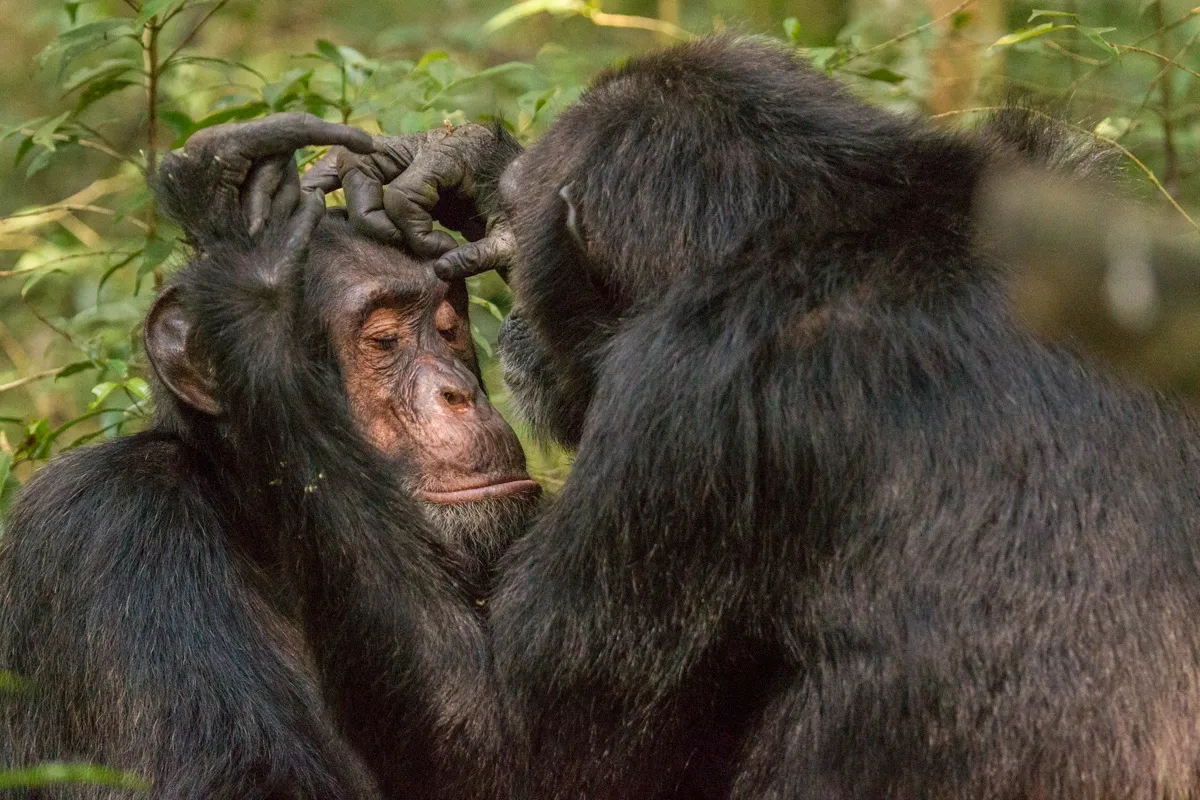You may have been told that it's rude to start eating before everyone is ready, or that you shouldn't leave the table before your guests have finished. As it turns out, apes are no different.
Like us, chimpanzees and bonobos make a common gesture that signifies they're ready to start and end a social interaction. While ours might be 'hello' and 'goodbye', apes will gaze at each other or make a vocal signal to show they're about to begin grooming, or that they want to stop playing.
These signals could represent the start and end of a mutual agreement, which researchers say challenges the current idea that only humans make these joint commitments.
As humans, chimpanzees and bonobos all evolved around 6-8 million years ago from one common ancestor, the new study suggests that joint commitments could be a behaviour that was present even then.
Read more about primates:
- Chimps' working memory 'similar to seven-year-old children'
- Key language ability 'existed in ancient primate ancestors'
"Imagine that you have a lunch meeting with your friend. Once you and your friend agree to meet at a certain time, you both value your lunch commitment; this means that you wouldn’t let your friend wait, nor would you leave your friend in the middle of the lunch," explained one of the study's authors Dr Raphaela Heesen, a researcher in human and great ape communication at Durham University.
"If your phone is ringing while you’re eating, then you’d probably try to avoid the interruption after all, or would excuse yourself to pick up the call, then return to your friend once done. Once you are done eating and you are both ready to leave, you will not do this abruptly but go through the process of saying good bye and wishing your friend well."
Heesen says that this is an example of a joint action with a common goal, in which you and your friend are mutually aware of the obligations linked to your lunch meeting.
"Joint commitment is the driving force, the glue, of our joint actions, whether at large (long-term research projects) or small scale (lunch)."
Though many animals do cooperate to achieve a goal, scientists have believed until recently that the sense of commitment felt by individuals when engaging in a social activity was limited to humans alone.
However, when Heesen and colleagues noticed two bonobos making gestures at one another after their grooming had been interrupted, the team began to wonder if a joint commitment relied on more than just a mutual obligation.

They proposed that joint commitment also requires the two parties to set up an agreement beforehand, and then mutually decide its end point. If so, then the behaviours they'd witnessed between the bonobos could be seen as the agreed return to a prior commitment to grooming each other.
To see if this could be the case, the team used footage of over 1,200 interactions, such as grooming and playing, between bonobos and chimpanzees in captivity.
"In social grooming, the apes groom each other’s body parts, while in social play, they engage in either chase play or rough-and-tumble play," explained Heesen. "Both interactions involve mutual attentiveness, reciprocity and communication for their coordination."
Their observations showed that the two species did communicate before and after a joint activity, using gestures such as holding hands, touching each other or butting heads, as well as vocalisations, mutual gazing and facial expressions.
Before playing with their friends, bonobos exchanged entry signals and mutual gazes 90 per cent of the time, while chimpanzees communicated that they were ready to start 69 per cent of the time. Both species performed exit signals even more often, with 92 per cent of bonobo and 86 per cent of chimpanzee interactions ending with a some form of gesture or gaze.
What if the two apes couldn't agree on the end of an interaction?
"We did very rarely observe such cases of disagreement," said Heesen. "In the cases that we did, the two individuals communicated before coming to the mutual agreement that they were ready to exit from the interaction!"
Read more about animal communication:
- How humpback whales communicate through a hidden global network of song
- Speaking with Skippy: Kangaroos can communicate with humans
The study also looked at whether social status and relationship played a part in joint commitment. While the chimps weren't affected by differences in these social standings, bonobos did change their actions based on how close they were with their partner.
When grooming or playing with an individual they weren't close to, the bonobos spent more time setting up and concluding the activity. Researchers say this could be similar to what we humans consider to be "social etiquette" or "politeness".
“When you’re interacting with a good friend, you’re less likely to put in a lot of effort in communicating politely,” said Heesen.
About our expert
Dr Raphaela Heesen is a postdoctoral researcher in the department of psychology at Durham University. She looks at how humans and great apes use communication to express emotions and coordinate joint activities.
